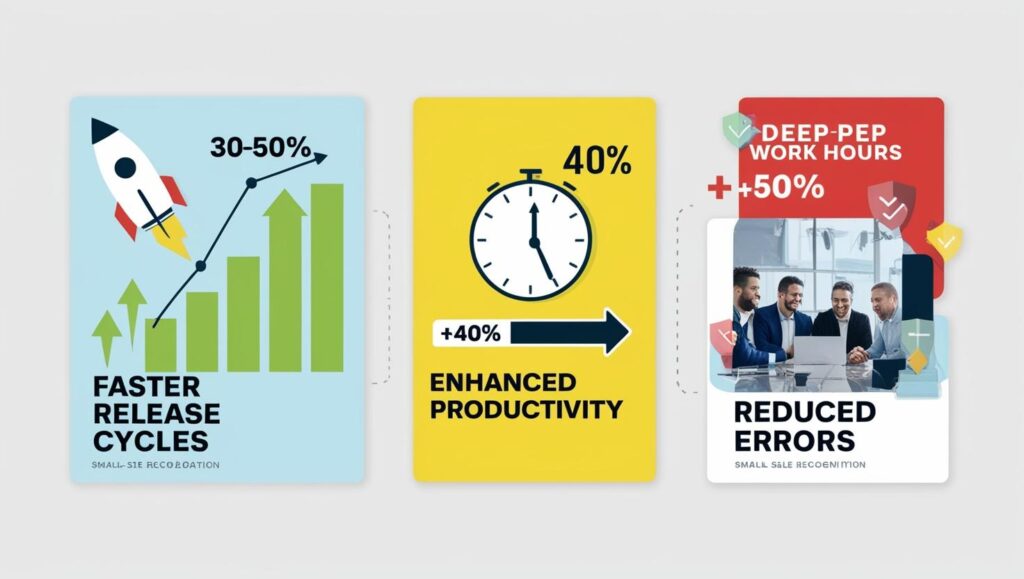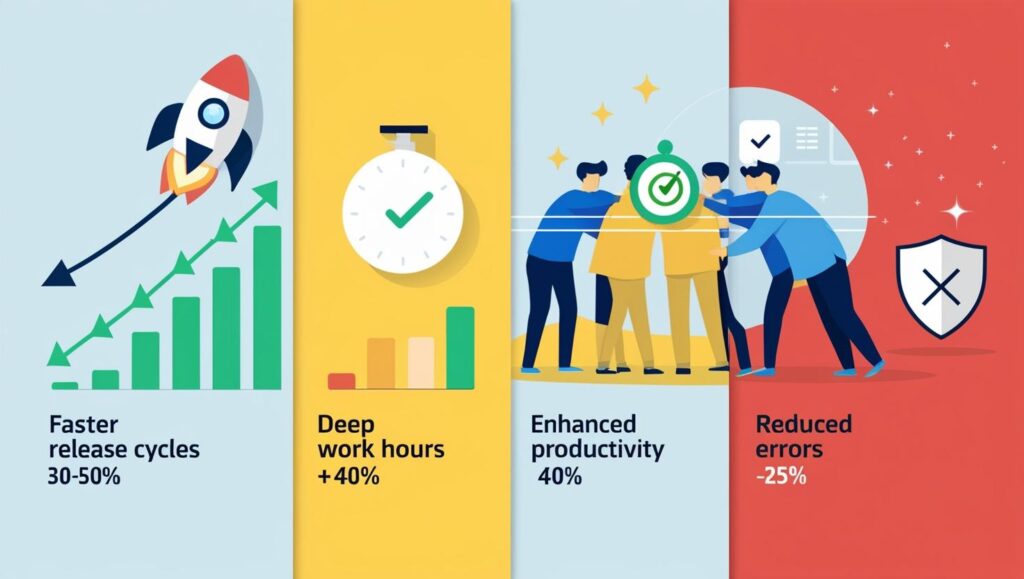In today’s fast-paced digital landscape, the power of teamwork has never been more essential. Businesses and developers are realizing that working together, across geographies and roles, can drive innovation at an unmatched pace. Enter co-development software—a game-changing approach that lets multiple developers, teams, or even organizations collaborate in real-time to create software. Gone are the days of isolated workflows and siloed coding environments. Now, cross-functional teams can ideate, develop, test, and deploy together, blurring the lines between planning and execution. In this deep dive, we’ll explore why co-development software is reshaping the tech world, how it works, and what you need to know to get started.
Introduction to Co-Development Software
What is Co-Development in Software?
At its core, co-development refers to a collaborative method where multiple stakeholders—whether individuals, departments, or even companies—contribute to a single software project. Unlike traditional development where work is often sequential, co-development emphasizes parallel workflows. Everyone is involved in shaping the outcome, from coders and UX designers to QA testers and project managers.
Think of it like a Google Doc for developers: just as multiple people can edit a document simultaneously, co-development software allows real-time code editing, merging, feedback loops, and instant integration. It’s more than just teamwork—it’s true partnership in creation.
What sets co-development apart is the shared responsibility and accountability. There’s no “my code vs your code”—there’s only “our product.” This promotes a higher level of transparency, trust, and innovation within teams, making it especially valuable in agile and DevOps environments.
The Rise of Collaborative Development Tools
The rise of co-development tools hasn’t happened in a vacuum. A few major shifts have catalyzed this transformation:
- Remote work boom: Since the global pivot to remote and hybrid work, there’s been a surge in demand for collaborative software development tools.
- Open-source culture: Communities like GitHub have proven the power of collective coding efforts.
- Complexity of modern software: Today’s apps are not built by lone wolves. They require multidisciplinary collaboration.
- Faster release cycles: Agile methodologies and DevOps have shortened feedback loops, necessitating faster and more cohesive team efforts.
Modern co-development software has responded with real-time commenting systems, branch protection rules, conflict detection, and even AI-assisted code suggestions to keep everyone on the same page—literally and figuratively.
Why Co-Development is Revolutionizing the Software Industry
Breaking Silos Across Teams and Organizations
In traditional software development environments, departments often work in silos. Developers focus on code, testers do QA after the fact, and product managers plan in isolation. Co-development breaks down these barriers by fostering cross-functional collaboration.
Imagine a product where the QA team starts writing test cases before development begins, and the design team can instantly suggest UI tweaks within the same platform. That’s the beauty of integrated co-development. Everyone contributes early and often, minimizing late-stage rework and fostering better end products.
Moreover, co-development isn’t limited to internal teams. External partners, clients, and even open-source contributors can participate, making it ideal for complex enterprise ecosystems or community-driven products. This horizontal integration boosts innovation and reduces time wasted on handovers and miscommunication.
Accelerating Time-to-Market Through Collaboration
One of the biggest advantages of co-development software is its ability to drastically reduce time-to-market. With streamlined workflows, simultaneous task execution, and built-in integrations, teams can ship faster and more efficiently.
Here’s how:
- Parallel Development: Multiple modules can be built and tested simultaneously.
- Instant Feedback: Real-time commenting and reviews eliminate email delays.
- Automated Testing: Continuous Integration (CI) ensures new code is always validated.
- Reduced Rework: Early involvement of all stakeholders prevents misaligned expectations.
Companies embracing co-development often report 30–50% faster release cycles, improved feature velocity, and higher customer satisfaction. It’s not just about coding together—it’s about creating better software, faster.
Key Features of Co-Development Software

Real-Time Code Sharing and Version Control
If co-development software were a house, version control would be its foundation. Tools like Git allow teams to manage changes to source code over time, enabling multiple developers to work concurrently without overwriting each other’s work.
But modern co-development tools go further:
- Live Code Collaboration: Developers can work on the same file at the same time.
- Branching and Merging: Easily test features in isolation before integrating.
- Conflict Detection: Instant alerts when changes clash.
- Blame Tracking: See who changed what, when, and why.
Whether you’re fixing a bug or launching a new feature, these tools ensure nothing gets lost in translation.
Integrated Communication and Feedback Systems
Collaboration thrives on communication. Leading co-development platforms now include chat, comments, and inline discussions, so teams can converse directly within the context of their code.
Key features include:
- In-line comments on specific lines of code
- Threaded discussions for structured feedback
- Mentions and alerts to keep stakeholders informed
- Code review workflows with approvals and suggestions
The result? Fewer Slack threads, no lost feedback, and a clearer path from idea to execution.
Role-Based Access and Permission Settings
Security is a major concern when multiple hands touch the same codebase. That’s why co-development software includes robust access controls. You can define roles like:
- Viewer (can see code but not edit)
- Contributor (can suggest or commit code)
- Maintainer (can manage branches and merge requests)
- Admin (full access)
Granular permissions help protect sensitive information, prevent unauthorized changes, and maintain regulatory compliance.
Top Co-Development Platforms in 2025
GitHub and GitHub Copilot
When you think of co-development, the first name that likely comes to mind is GitHub. It’s not just a code repository—it’s a hub for millions of developers around the world collaborating in real-time. In 2025, GitHub has continued to evolve with enhanced collaboration features, better security, and tighter integration with AI tools.
One of the most revolutionary features is GitHub Copilot—your AI pair programmer. It helps you write code faster, suggests improvements, and even autocompletes entire functions based on context. Imagine brainstorming code with an intelligent assistant 24/7.
GitHub supports branching, pull requests, issue tracking, project boards, and Actions for CI/CD. Combined with GitHub Discussions and wiki documentation, it becomes a one-stop-shop for co-development.
Other standout features:
- Actions Marketplace for automating workflows.
- GitHub Codespaces for cloud-based development environments.
- Security advisories and Dependabot to manage vulnerabilities.
GitHub empowers developers to go from idea to deployment without leaving the platform.
GitLab – DevOps Powerhouse
If GitHub is the king of collaboration, GitLab is the DevOps emperor. It’s not just a code repository—GitLab offers a complete DevSecOps platform in one application, making it ideal for enterprises that want everything under one roof.
GitLab provides:
- Source code management
- CI/CD pipelines
- Issue tracking
- Auto DevOps
- Security scanning
- Infrastructure-as-Code
Teams can collaborate on planning, testing, reviewing, and deploying—all in the same interface. With Epics, Milestones, and Boards, GitLab supports agile methodologies and long-term project tracking.
Its unique selling point? Single application for the entire DevOps lifecycle. That means no more switching between tools or syncing between systems.
GitLab also emphasizes transparency with in-depth analytics, contribution graphs, and shared responsibilities.
Bitbucket and Atlassian Ecosystem
Bitbucket by Atlassian is another major player, especially popular among teams that already use Jira, Confluence, or Trello. It excels at integrating version control with task management and documentation.
Bitbucket is more than just Git hosting. It offers:
- Built-in CI/CD pipelines
- Branch permissions and merge checks
- Smart Mirroring for faster cloning and fetching
- Deployment tracking
What makes Bitbucket shine is its integration with the Atlassian ecosystem. Developers can see Jira issues linked to branches, create pull requests from Confluence pages, and manage releases across platforms.
For teams using agile boards and sprint planning in Jira, Bitbucket feels like a natural extension of their workflow.
Benefits of Using Co-Development Tools
Enhanced Developer Productivity
Co-development tools aren’t just about collaboration—they’re about empowering developers to work smarter. With automated workflows, intelligent suggestions, and real-time syncing, developers spend less time on logistics and more on actual coding.
How it boosts productivity:
- Faster onboarding: New devs can understand project context with inline docs and comments.
- Smart suggestions: Tools like Copilot reduce coding time by autocompleting repetitive tasks.
- Reduced context switching: One platform means less jumping between apps.
By streamlining the development pipeline and centralizing communication, these tools give developers more deep work time—the holy grail of productivity.
Streamlined Workflow and Automation
Co-development tools come packed with automation that cuts down on busy work. From triggering tests when you push code to deploying builds after approval, automation ensures the pipeline flows smoothly.
Automated features include:
- Pre-merge testing
- CI/CD integration
- Issue tagging and tracking
- Automatic changelog generation
With tools like GitHub Actions or GitLab CI/CD, teams can define workflow files that automate every step—from linting to deployment. This not only reduces errors but also enforces consistency across teams.
And let’s not forget the feedback loops—automated alerts notify team members of bugs, failing builds, or outdated dependencies in real-time.



